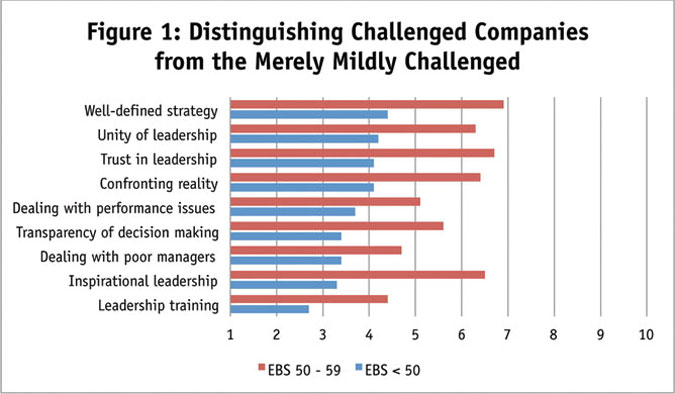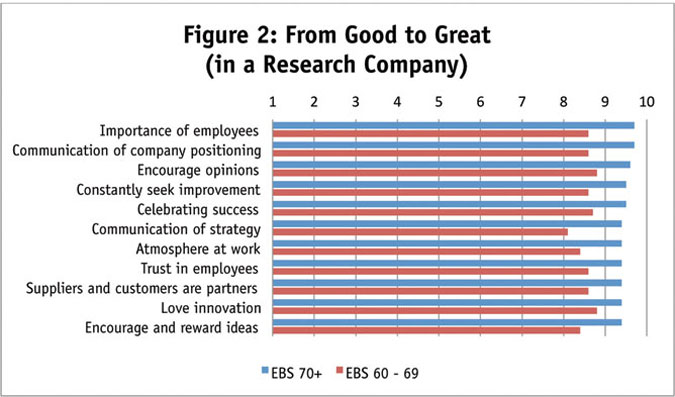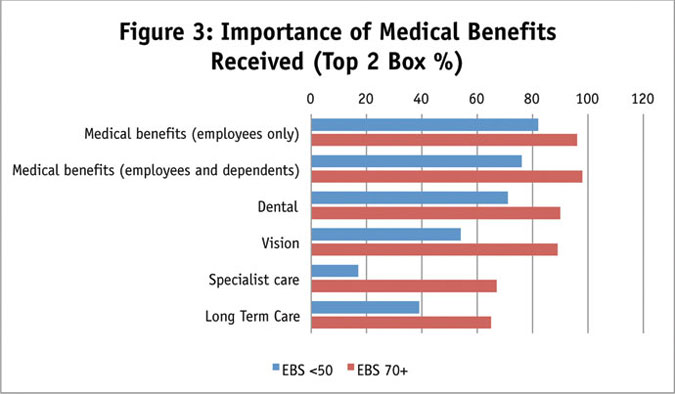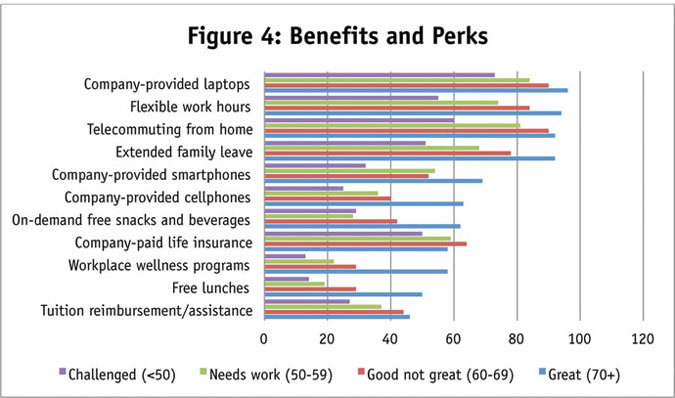Perks are only part of it
Editor's note: Simon Chadwick is managing partner and Lock Collins is partner and human resources practice leader at Cambiar Consulting.
We are all familiar with the concept of a corporate brand – that amalgam of attributes and feelings that make up the overall image and personality that a company projects to the outside world. But what about the brand that it projects internally? What about the attributes and feelings that it engenders in the people who actually work there or, indeed, who might think about working there in the future? At Cambiar, we call this a company’s Employer Brand.
Just like an external brand, an Employer Brand is made up of attributes that are both hard and soft. The hard ones are things like salaries, compensation programs, health benefits and those extra benefits and perks that companies sometimes do or don’t offer. The soft ones relate more to things like management culture, the presence of a clearly defined and communicated strategy and the work environment.
Generically, there are many studies that, in one way or another, measure Employer Brand. Just think of the “best place to work” studies and awards that abound in various states and cities. But until now, there has never been a comprehensive study of Employer Brand in the market research industry. What makes for a great MR Employer Brand? And what makes for a truly challenged one? Cambiar set out to find out with its first-ever National Employer Brand Survey – an online survey of 430 employees (of all ranks) in firms involved in providing market research services throughout the country. (Cambiar is indebted to Quirk’s for their assistance in carrying out this study.)
To arrive at a good, composite understanding of the Employer Brand of any one respondent’s company, Cambiar devised an algorithm to derive an Employer Brand Score (EBS). Based on a hypothetical top attainable score of 100, the reality is that most firms score somewhere between 40 (a score that we determine to be “life threatening” to the company) and 75 (“outstanding”).
Disturbing to see
So how did “Research USA” fare on this scale? Not terribly well. The average EBS given by respondents to the companies in which they worked came to 56.3 – a level we would categorize as “good, but could use some work.” While 46 percent of firms were rated as excellent or outstanding on an EBS basis, it is disturbing to see that nearly a third of our respondents scored their firm 50 or below – a level we would characterize as “challenged.”
Put another way, nearly a third of the research employee population in this country works for lousy companies (at least, that’s the way they see it). So what makes these firms so challenged?
First, let’s dispense with one artifact of a survey like this: If you work for a company that you think is challenged, you will score it “down” right across the board on hard and soft attributes alike. Similarly, if you really love the company you work for, you will score it “up” right across the board. So, being aware of this halo effect, we looked for those areas where the challenged companies really stunk and where the great ones really shone.
What makes a challenged company challenged? The answer is simple: lousy leadership. More than anything else, research firms scoring an EBS below 50 lack leadership in pretty much every respect. These companies have untrained leaders who are unable to inspire; are not trusted by their staff; cannot confront, or deal with, reality; lack unity and lack a well-defined strategy. Being bad leaders, they make decisions in ways that are not transparent and don’t deal with performance issues on a timely basis, let alone poor managers.
We also noticed that basics such as an orientation program for new employees and performance management programs that are tied to strategy and are appreciated by employees and management alike are missing from such companies. The upshot is a company that gives its employees plenty of reasons to leave.
So what is the difference between a truly challenged company as seen through the eyes of its employees as opposed to one that is OK but could use some serious work? As we can see in Figure 1, these latter research firms (EBS 50-59) have some of the same management problems as their more challenged peers (not dealing promptly with performance issues, for example) but are at least blessed with leaders who are more likely to have a well-defined strategy, are inspirational, are unified and can confront some measure of reality. As such, these leaders are more likely to be trusted.

Decent leadership, then, goes some way to mitigate bad management. However, this is obviously not enough to make a research company truly great. What does distinguish an outstanding research firm from its peers? While it is true that companies scoring an EBS of 70+ turn all of the above woes on their heads and really do provide inspirational leadership, it turns out that this is not sufficient to make them great. What really makes them great is what they do with that leadership.
Openly trust
According to our respondents – who, remember, are rating their own companies – a great research firm will consistently (as opposed to intermittently) emphasize the importance of its employees, encourage their opinions and ideas and openly trust them. Leaders demonstrate this by communicating company strategy and where they see the firm fitting into the marketplace and by celebrating shared successes.
A great company is also one that puts innovation front and center, treats suppliers and customers alike as partners and is constantly seeking to improve itself (Figure 2).

Great research companies get all the basics right and have inspirational leaders. But the real secret is that these leaders live and breathe the notion that employees are at the center of the ecosystem of success.
That this is so is borne out by the “harder” attributes of a great Employer Brand. Great research companies do not necessarily differ too much from their lesser brethren in terms of the medical benefits they offer their employees – they differ by offering benefits that are important to their employees. So, while it is true that a great EB company is a little more likely to offer such things as dental, vision, specialist and long-term care insurance to their associates, what really counts is that these things matter that much more to the associates in question. The company listens to its employees and then tailors the benefits to them.
Interestingly, while “challenged” companies may well offer similar benefits, the employees who receive them rate them as less important than do their peers in better firms (Figure 3).

Are these benefits really that much less important to employees of challenged companies? At first sight it would seem so, although perhaps we might speculate here that, if your leadership and environment are challenged, no number of special benefits are going to make up for it. You want the basics fixed first. Once those are in place, you then can appreciate much more the value of the benefits you receive.
The same is true for non-medical benefits and perks. For example, one of the perks that really distinguishes great companies from their peers is the availability of workplace wellness programs. Fifty-eight percent of great companies offer these, as opposed to 13 percent of challenged ones. But even where they are offered in challenged companies, employees rate them very low in terms of importance (18 percent top-two box) whereas their counterparts in great companies rate them very highly (70 percent top-two box). Is it that the provision of such a benefit in a company that is otherwise challenged is clouded by an overall feeling of cynicism that somehow devalues the benefit itself?
Many more benefits
Whatever the truth of the matter, it is nonetheless the case that great companies offer many more perks and benefits than do their counterparts elsewhere (Figure 4).

If you work in a challenged research company, you stand a good chance of getting a laptop and an even chance of telecommuting, flexible work hours and extended family leave in the event of childbirth, bereavements and the like. Since the latter is pretty much mandated by law in many states, we can safely say that the challenged company is thinking more about your productivity and how it benefits the company rather than your wellbeing as a human being.
Contrast this with the great company, where the benefits are oriented not only around your productivity (great companies are not stupid, after all!) but also around your well-being. What is interesting here is that a great company, taken overall, is not that different in the perks and benefits that it offers to a good one. In both you stand an even chance or better of getting free snacks and beverages, a smartphone and even assistance with tuition for further education (good and great firms want smart people working for them). But a great company pushes the boat out just a little further with workplace wellness programs and free lunches. Think of it as a research company operating a bit like the Google Campus.
Interestingly, which of these latter benefits you get depends quite heavily on the size of the company for which you work. If you are in a large research firm, you will be more likely to get a workplace wellness program, tuition reimbursement, retiree health benefits and life insurance. Smaller companies, who perhaps cannot afford such largesse, concentrate on more “environmental” benefits such as free lunches, on-demand snacks and benefits and car allowances. Interestingly, employees of each place much more importance on the differential benefits they receive than do their counterparts elsewhere – so the small company employee finds lunches and snacks more important than her counterpart in a large firm, whereas a large-firm employee places more value on things like tuition reimbursement. This would suggest either that these firms are good at judging what would be valuable to their employees or that people gravitate to the type and size of firm that suits them best.
In either environment, flexible working hours and telecommuting from home are incredibly important, suggesting that these have now become costs of entry to being a good employer in the research industry.
A correlation?
Is there a correlation between size of company and its performance on the Employer Brand Score? Not really. The average EBS ranges between 54 and 58 across all sizes of firm. Rather, it is the difference in what drives the EBS in companies of different sizes that counts:
-
Smaller companies do much better on leadership and environmental issues – their leaders are more likely to be seen as inspirational; are more likely to be trusted and more trusting of employees. They are more employee-centric and give their employees fewer reasons to leave.
-
Bigger firms do less well on these attributes. Decision-making is more opaque, there are more management layers and they don’t trust their employees as much as smaller companies do. On the other hand they are better at training their management, at orienting new employees and at defining their strategies.
-
Where bigger firms tend to catch up on their smaller counterparts in terms of their EBS is in the range and value of benefits that they offer. However, this appears to be less “sticky” where employees are concerned, and does not prevent them from leaving or from looking over the fence at where the grass is presumably greener. Employees in larger research firms are more likely to cite other companies at which they would like to work (step forward GfK, Maritz and BrainJuicer), while employees at smaller firms are more likely to say that there is nowhere else that they would wish to work.
Divorced from reality
Finally, we wanted to know if there was a difference in the way in which management perceived their firms as opposed to their non-managerial employees. The answer, surprisingly, was no. The average EBS for both groups was identical (55). This would suggest that most managers are as aware of the conditions inside their companies as their employees are. There is, however, one exception: CEOs. The average EBS for CEOs is 63, suggesting that most of them think their company is pretty darn good.
The big question here is: is this just puffery, with the CEO deliberately “talking up” his firm in the survey, or does it suggest that many CEOs are rather divorced from the reality of what goes on in their companies? The answer, we suspect, is a bit of both. Certainly, our experience would suggest that there are many CEOs who really are blind to the facts of life in their firms, while there are also those who are not beyond a bit of skullduggery to lift their firm’s average score. Either way, we view Employer Brand as a useful tool for those CEOs who really want to know how their employees view the firm from the inside – and how to improve conditions to the point where employees become advocates for the firm and people outside it want to join.
